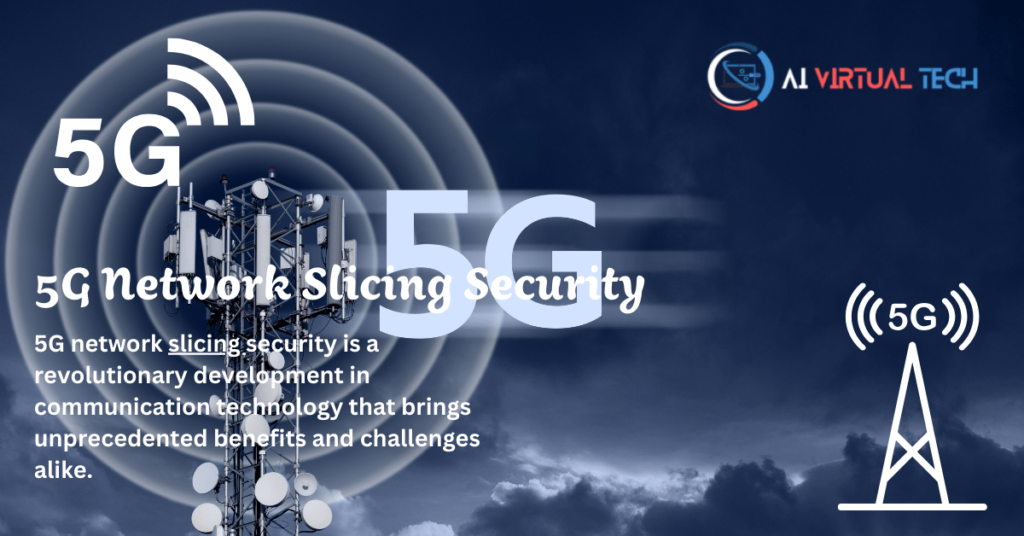5G network slicing security is a revolutionary development in communication technology that brings unprecedented benefits and challenges alike. This article provides an in-depth analysis of this fascinating subject.
Understanding 5G Network Slicing Security
- 5G slicing promises a new era of connectivity by enabling multiple virtual networks to operate within a single physical network.
- This revolutionary approach ensures efficient use of resources, better management, and tailored services according to specific user requirements. However, as with any technology, it comes with its own set of security concerns.
- The primary concern relates to the protection of data as it moves between various slices.
- Ensuring secure data transfer between different slices and maintaining privacy becomes paramount.
- Encryption and stringent access controls are among the solutions being considered to address these concerns.
- The ability to detect and respond to these threats is crucial to maintaining the integrity of the network.
- Proactive monitoring and robust cybersecurity measures are essential to thwart potential intrusions.
The Role of Standards in 5G Network Slicing Security
Standards play a pivotal role in ensuring the security of 5G slicing. These guidelines help establish a consistent approach to managing security risks across different slices.
They provide a framework for identifying potential vulnerabilities and implementing corrective measures.
Non-compliance could lead to security breaches and compromise the integrity of the overall network. Continuous compliance monitoring and regular audits are crucial in maintaining network security.
The standards facilitate communication among different slices. They enable the seamless transfer of data between slices, thereby enhancing operational efficiency. They also provide a basis for developing new security measures as technology evolves.
The Future of 5G Network Slicing Security
- As the adoption of 5G network slicing continues to grow, so does the need to enhance its security.
- Research and development efforts are underway to address the unique security challenges posed by this technology.
- These efforts focus on developing innovative solutions to secure data transfer, detect threats, and respond to security incidents.
- The future of 5G network slicing security lies in the adoption of AI and machine learning technologies.
- These technologies hold the promise of enabling real-time threat detection and response, thereby significantly enhancing network security.
- It is crucial for organizations and stakeholders to continuously monitor the security landscape and adopt proactive measures to mitigate potential threats.
- With this approach, 5G network slicing can truly revolutionize how we connect and communicate in today’s digital era.
Emerging Trends in 5G Network Slicing Security
The world of 5G network slicing is dynamic, with new trends rapidly emerging. One such trend is the increasing use of blockchain technology for enhanced security.
This technology provides an immutable, transparent, and decentralized solution for managing and securing data, which can significantly enhance the security of 5G network slices.
Another notable trend is the use of quantum cryptography for secure communication. This technology leverages the principles of quantum mechanics to secure data transfer, making it virtually impossible for hackers to intercept or manipulate data.
As 5G network slicing continues to become more sophisticated, quantum cryptography is expected to play a crucial role in securing communication.
These protocols will provide a reference framework for implementing security measures and can significantly enhance the interoperability and resilience of 5G networks. A standardized approach will also make it easier for stakeholders to collaborate and adopt best practices.
Role of Government and Regulatory Bodies in 5G Network Slicing Security
- Government and regulatory bodies play a crucial role in ensuring the safety and security of 5G networks.
- They are responsible for setting standards, enforcing regulations, and overseeing the implementation of security measures.
- They need to stay abreast of the latest developments in technology and cybersecurity to effectively govern the industry.
- These bodies can facilitate collaboration among stakeholders and promote the sharing of best practices.
- This can help in the development and implementation of robust security measures that address the unique challenges posed by 5G network slicing.
- Therefore, it is important for government and regulatory bodies to actively engage with the industry and contribute to the development of secure 5G networks.
- They can provide funding and resources for research initiatives, thereby contributing to the advancement of security technologies and solutions for 5G networks.

The Impact of 5G Network Slicing Security on Businesses
Businesses stand to benefit greatly from the enhanced connectivity and efficiency offered by 5G network slicing.
To mitigate these risks, businesses need to invest in robust security solutions. This includes deploying advanced firewalls, intrusion detection systems, and data encryption technologies.
Businesses should implement a comprehensive cybersecurity strategy that includes regular security audits, employee training, and incident response planning.
It’s also important for businesses to stay abreast of the latest developments in 5G network slicing security.
This can help them anticipate potential threats and implement proactive measures to protect their networks.
Summary
This article discusses the critical role of regulatory bodies in the security of 5G networks. It highlights how government entities can aid in setting standards, and regulations, and promoting research in the field of 5G network slicing security. It then addresses the impact of 5G network slicing on businesses, noting the potential financial and reputational risks associated with security breaches. The article emphasizes the importance of investing in robust security solutions, continuous cybersecurity strategy updates, and staying abreast of the latest developments in 5G network slicing security.
Frequently Asked Question (FAQS)
What is the role of regulatory bodies in 5G network slicing security?
Regulatory bodies set standards and regulations, and promote research and development in the field of 5G network slicing security. They can also provide funding and resources for research initiatives.
How does 5G network slicing impact businesses?
5G network slicing presents both benefits and challenges to businesses. While it enhances connectivity and efficiency, it also introduces new security risks that can result in significant financial losses and damage to reputation if not addressed properly.
What are effective measures a business can take against these risks?
Businesses can mitigate these risks by investing in robust security solutions like advanced firewalls, intrusion detection systems, and data encryption technologies. They should also implement a comprehensive cybersecurity strategy that includes regular security audits, employee training, and incident response planning.
Why is it important for businesses to keep up with the latest developments in 5G network slicing security?
Staying informed about the latest developments helps businesses anticipate potential threats and implement proactive measures to protect their networks, enabling them to maximize the benefits of 5G network slicing security while minimizing associated security risks.
What are the potential consequences of a 5G network breach for a business?
A breach in the 5G network can lead to significant financial losses and damage to the business’s reputation, affecting customer trust and potentially leading to loss of business.
Conclusion
In conclusion, the advent of 5G network slicing offers significant opportunities for improved connectivity and efficiency in businesses. However, it also presents substantial security challenges. Regulatory bodies and businesses need to work together to ensure the security of these networks, with businesses investing in robust security measures and staying current with the latest developments in 5G network slicing security. This will enable businesses to fully leverage the benefits of 5G while mitigating associated security risks.













